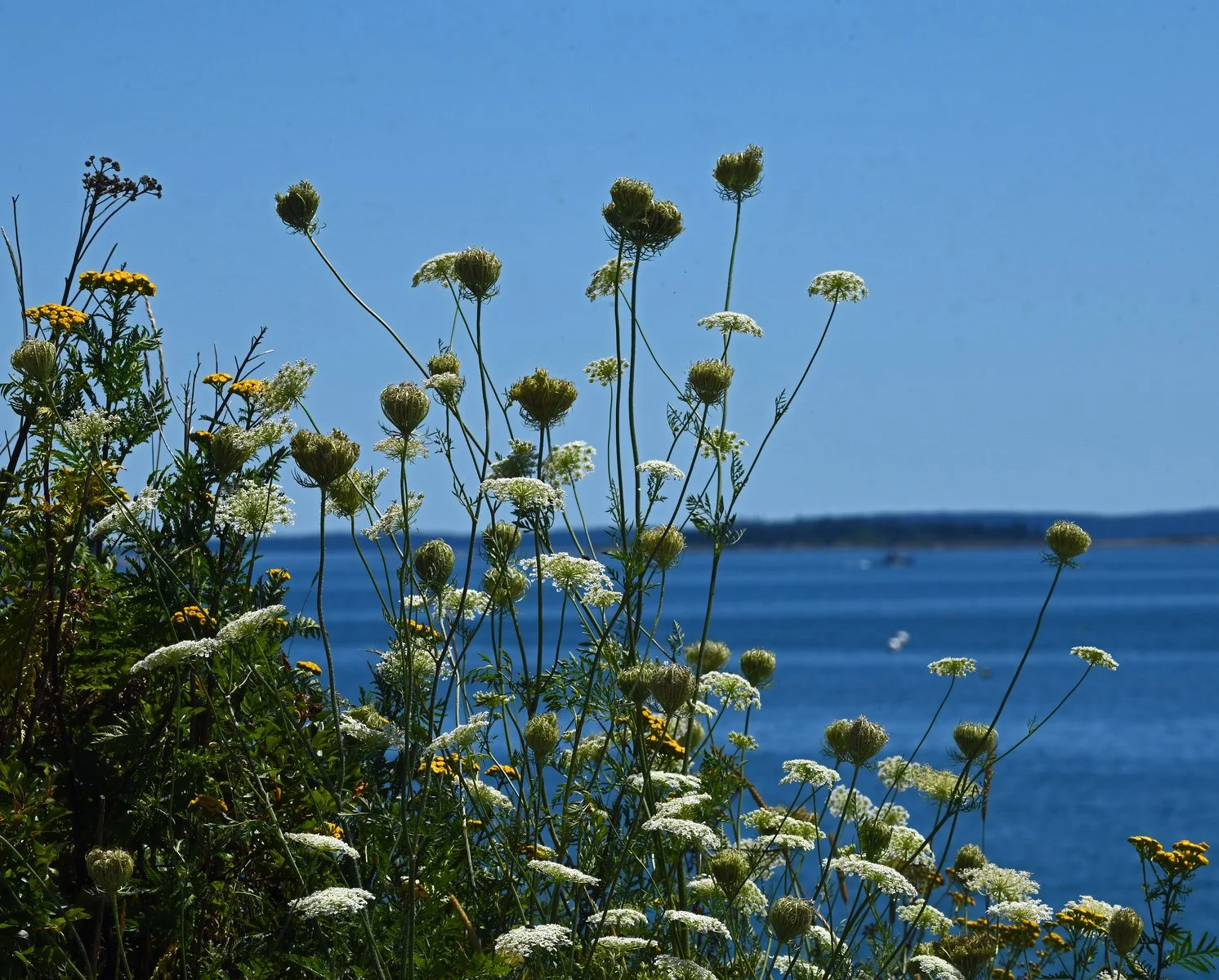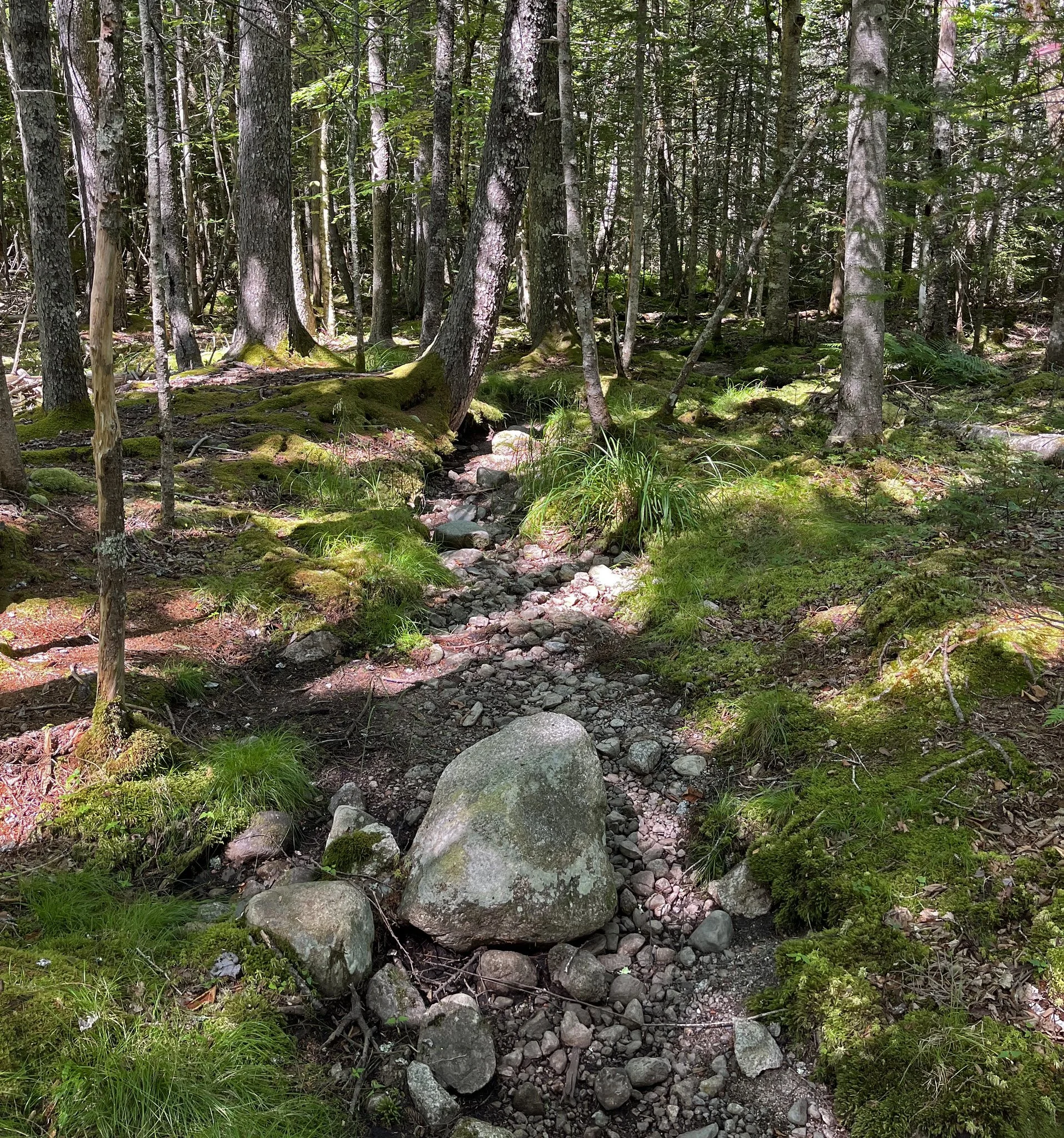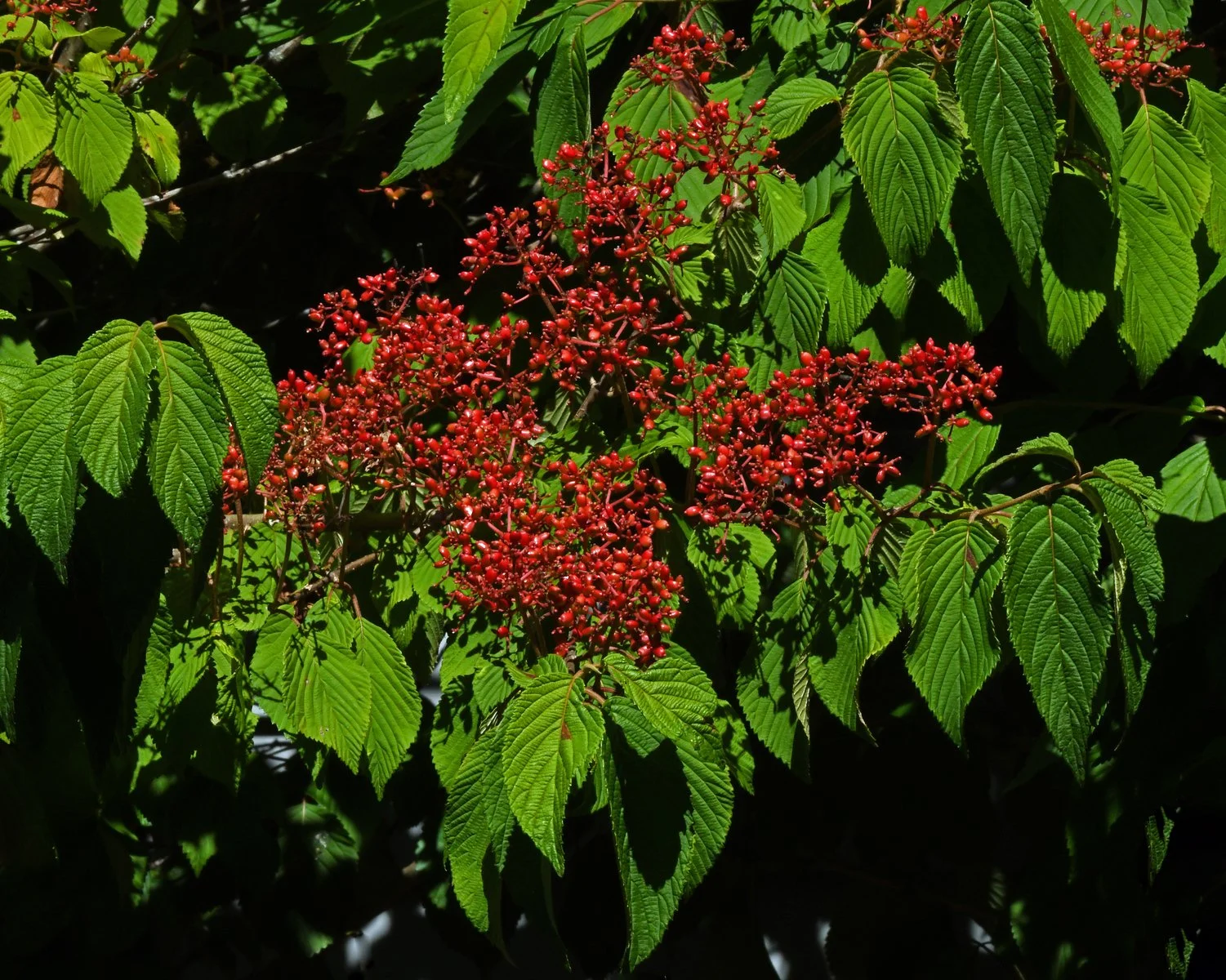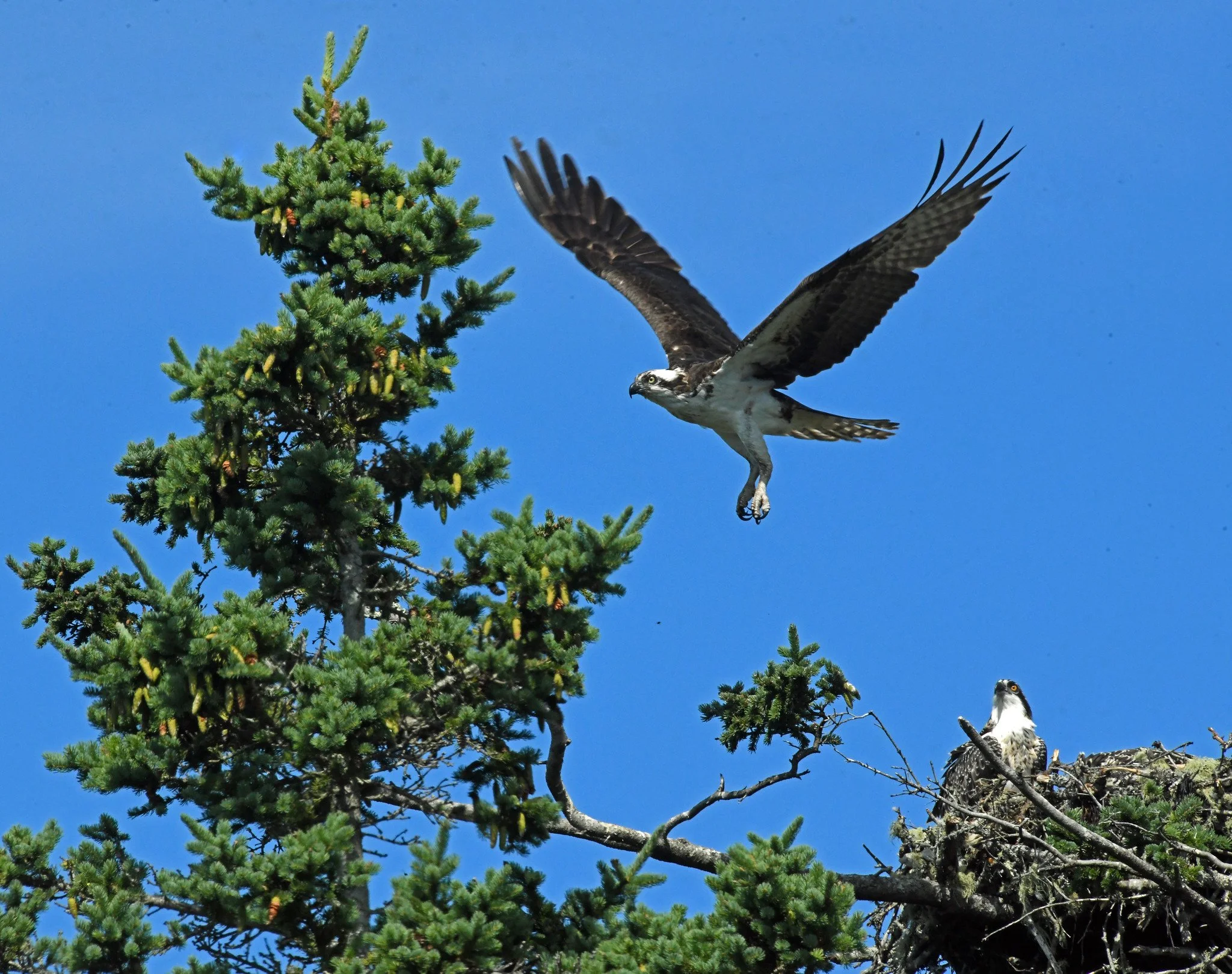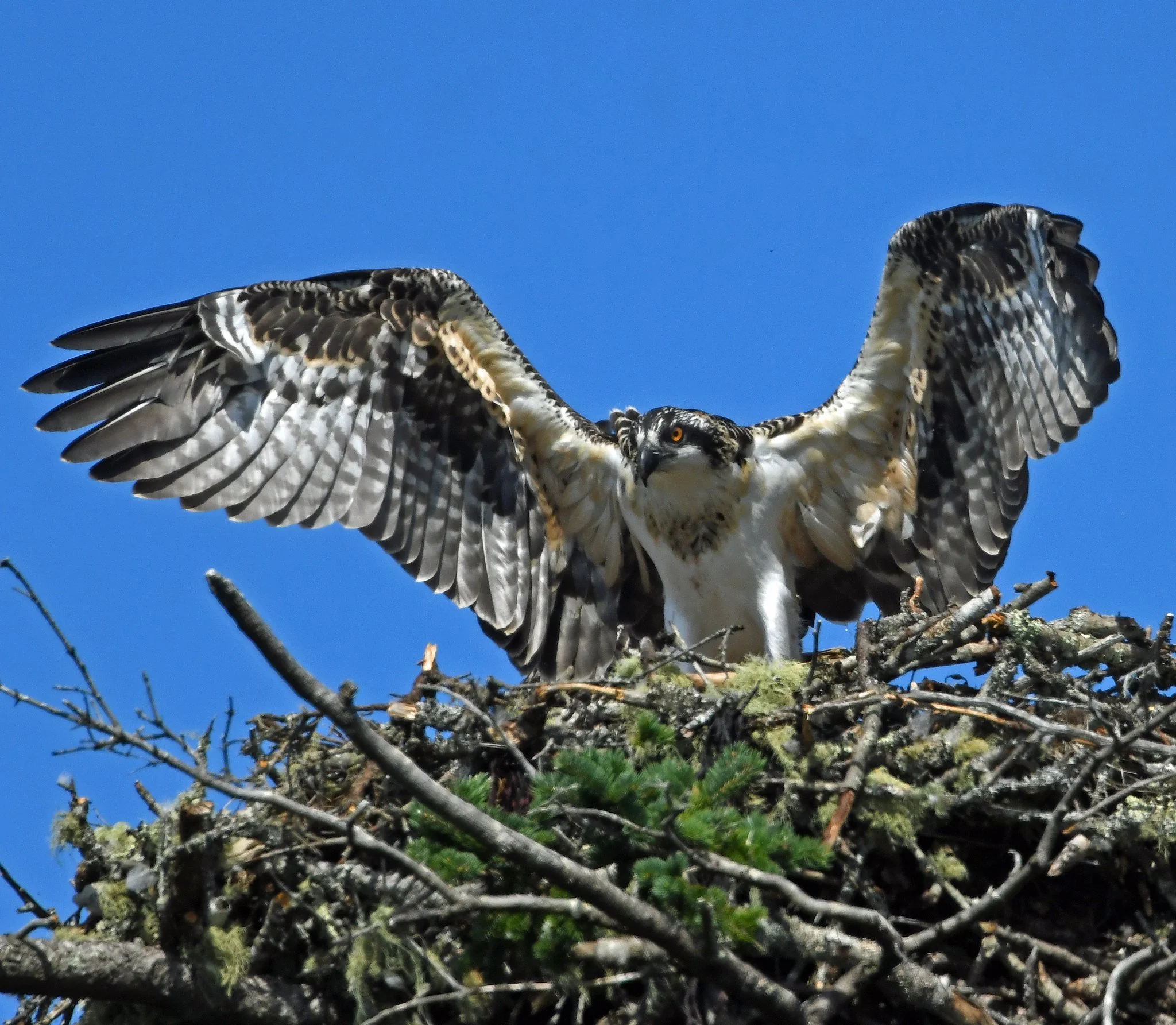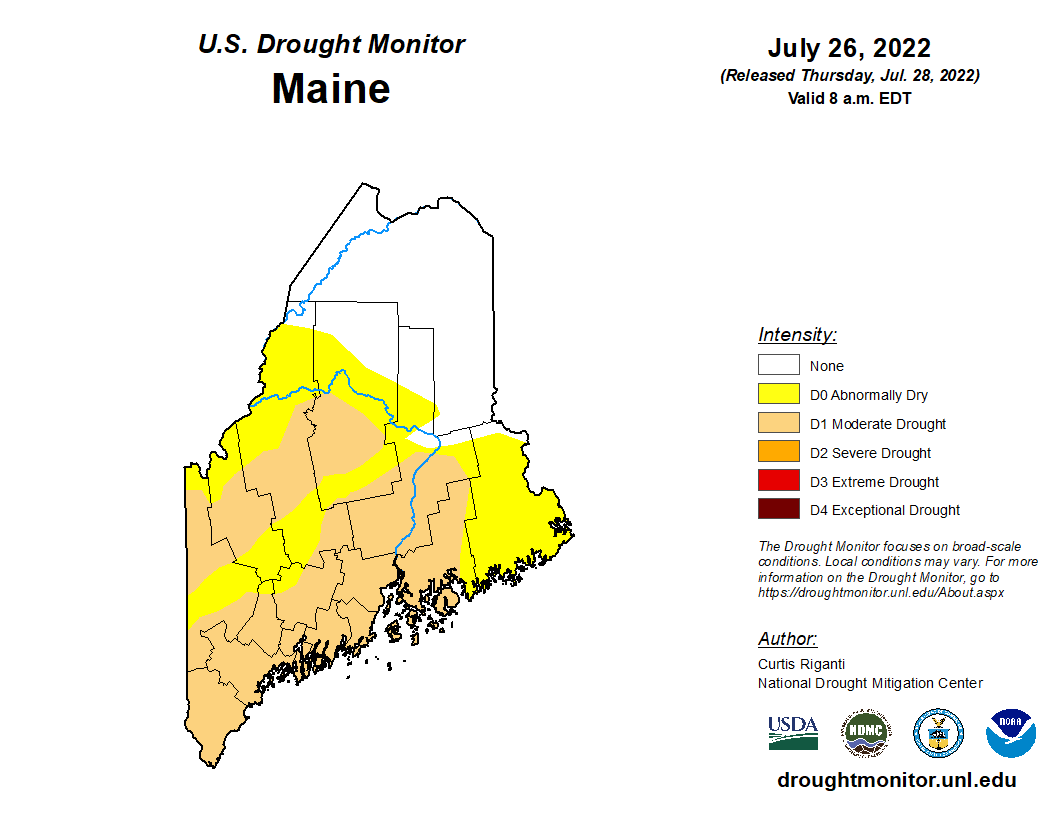Here you see Great Cove at dusk on Friday. Boats are collecting for Saturday’s annual Eggemoggin Reach Regatta.
Some of the vessels are the racers and some are floating platforms for visiting spectators who like to be close to the finish line. That finish line is at the southwest entrance of the Cove, just to the left of Babson Island in the above image.
The race began as scheduled on Saturday morning, which was clear, but with weak winds. At about 3:45 p.m. that day, however, fog started rolling down the Reach and into into the Cove. Here you see it enveloping the spectator boats:
By the time that the racing boats reached the finish line, some of the fog patches were dangerously thick:
All’s well that ends well: The Cove was clear this morning as the early light reached it:
The Regatta began in 1985 and has been run over the same 15-mile course since then. All of the boats in the race must be wooden and at least 24 feet long. (Images taken in Brooklin, Maine, on August 6 and 7, 2022.)









